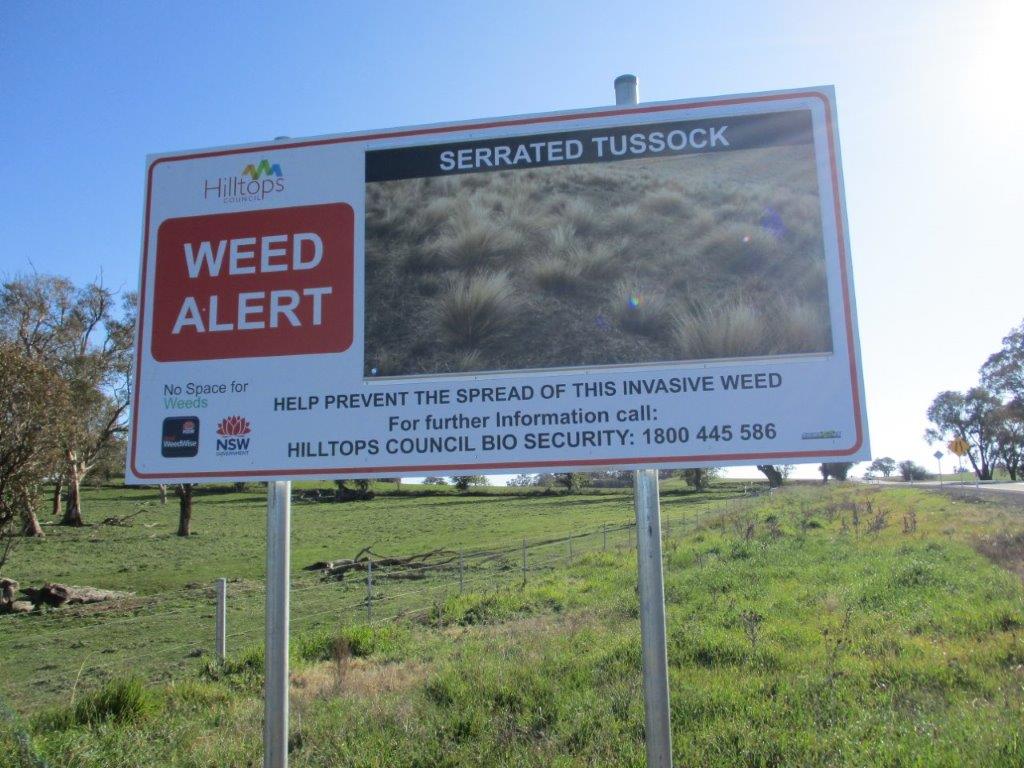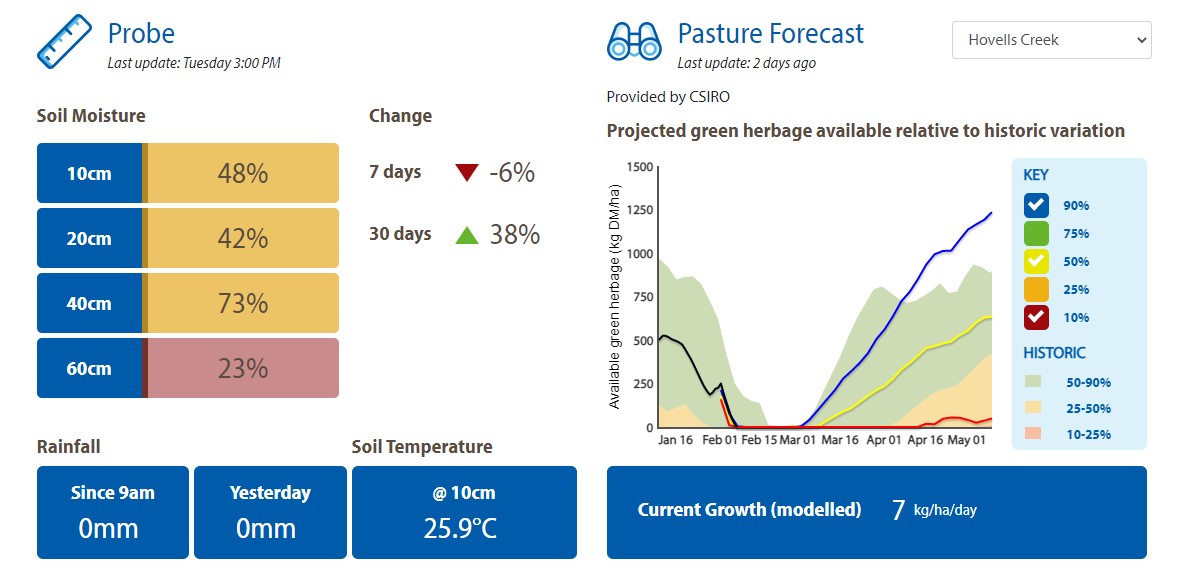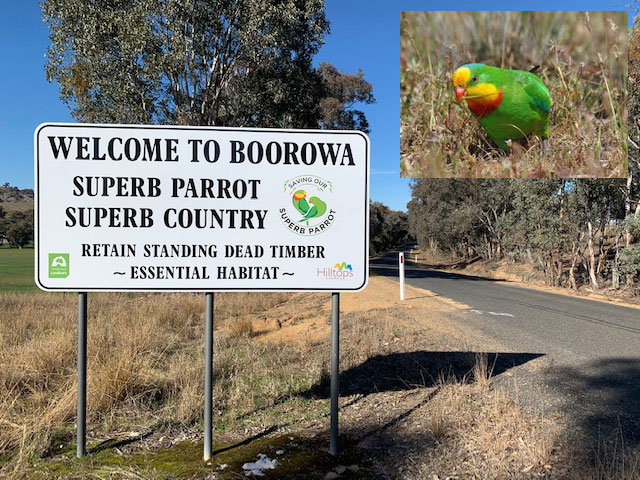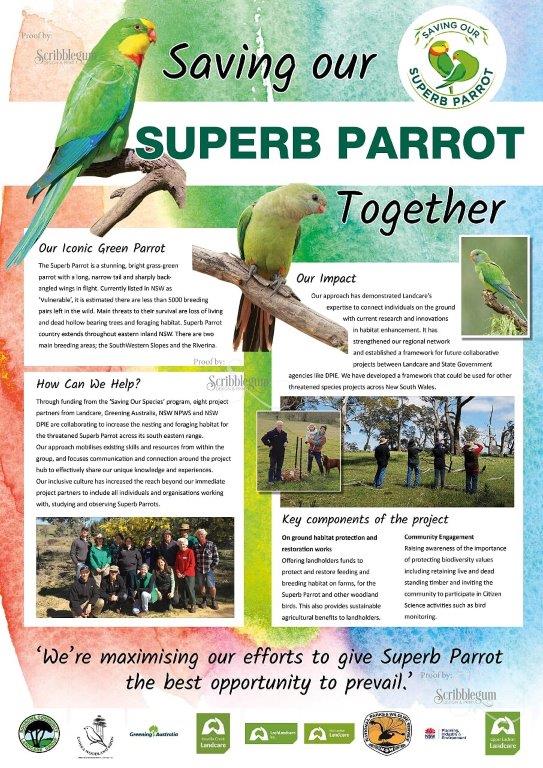Current Activity
In 2020 we were funded by the Communities Environment Program through the office of Angus Taylor MP, for a serrated tussock project to support landholders doing chemical weed control work on their properties. This is a continuation of HCLG’s long-term work on weeds of concern in the district.
The funding covers the cost of appropriate chemicals for interested landholders as well as some of the cost of using spraying contractors. It will also cover any chemical certification training needed by landholders doing the work themselves. A workshop on the use of chemicals for serrated tussock control was planned for 2020 but was not held due to covid-19 constraints. Best practice safety and use information has been distributed instead. The project is due for completion by early 2021.


This program of erosion control works on members’ farms has been proudly funded by the NSW Environmental Trust ($99,000 for ET stage 1) and South East Local Land Services ($27,000 to fence, plant and seed earthworks and gullies – project SELLS). It was done concurrently with ET stage 2 funded by the Environmental Trust for $170,000 and the federal Murray Darling Healthy Rivers program ($50,000 – project MDHR). ET1 has run from 2019 to 2024.
The main aim of the program has been to reduce the amount of sediment leaving farms via erosion gullies and ending up in Hovells Creek and the Lachlan River. A 2016 report by the Department of Primary Industries found that there is a 170+ km sand slug in the Lachlan that has filled in all the aquatic places of refuge for drier years as well as all the Murray Cod breeding holes. It has many other negative impacts on numerous threatened and other aquatic and riparian species of plants and animals.
Other major benefits of the program are keeping more water and soil on farms and stabilising vulnerable areas, providing more shade and sequestering carbon by planting more trees and shrubs.
The works are all aimed at slowing the flow of water through the landscape and have included:
- battering the sides of deep gullies to flatten them
- shaping the landscape to spread the water flow instead of concentrating it
- constructing rollover drains on shaped land
- building a rock groyne and a rock riffle
- building rock-lined channels on Geotech fabric
- building dams with trickle pipes low in the dam wall
- building leaky weirs and leaky dams (leaky weir project still in progress)
Project Updates


Sand deposited from Hovells Creek into the Lachlan River at the junction of the two waterways and at Cowra 2024.

With a $10,000 grant from South East Local Land Services, HCLG has installed a soil moisture probe and long-term automatic rainfall/soil moisture monitoring site on a property in Hovells Creek valley. The monitoring station has been linked to the South East Network of monitoring sites and information from the site can be accessed at https://farmingforecaster.com.au/ The Farming Forecaster site also has several short videos on how to understand and use the information from the probe. As part of the project, soil carbon and pH testing are underway at several member properties. A workshop is proposed specifically for members to help with understanding the benefits of soil testing and the soil moisture probe network for their farm management decision making.



A consortium of 5 Landcare groups (Lachlandcare, Mid Lachlan Landcare, Hovells Creek Landcare, Boorowa Community Landcare and Upper Lachlan Landcare) partnering with Cowra Woodland Birds, Greening Australia and NPWS have been working to protect the iconic and endangered Superb Parrot. The SOSP group received $400k from the NSW Office of Environment and Heritage (OEH) through the NSW Government’s Saving Our Species (SoS) program. Over the last 3 years the groups have been delivering on-ground protection and restoration of important habitat for the threatened Superb Parrot, and will continue to do so into 2021.
The project was launched with a workshop in August 2018 and a field day was held as a follow-up in October. Landholders heard what is being done to save the species and learnt how to count individual parrots on their land and how to protect living and large, dead, hollow-bearing eucalypt trees that provide nest sites for superb parrots.
The SOSP group provided funding to support farmers to plant new paddock trees and shrubs and restore woodlands to increase future habitat and landscape connectivity for superb parrots from small patches through to whole of paddock revegetation actions. HCLG members planted twelve paddock trees on each of two properties where Superb Parrots have been seen and a third landholder is in the process putting in 1800m of fencing around a gully to protect known Superb Parrot habitat. The landholders have been working closely with Damon Oliver from the Department of Planning, Industry and the Environment to monitor and report on the number of birds on their property since the beginning of the project.
The SOSP also provided funding for roadside signage to educate the public about the parrot.
This community-based project adds to the work already being done by farmers and Landcare groups who have planted hundreds of thousands of trees and shrubs in paddocks, along fence lines and creeks and rivers and will help a range of other threatened woodland birds.

Links to media articles:
https://landcarensw.org.au/birds-of-a-feather/


